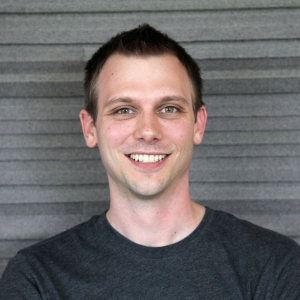- Published on
Q&A with Jonas Downey

Hi, my name is Jonas Downey. I’m a designer at Basecamp (formerly 37signals) in Chicago. I help build Basecamp (the app), which involves a lot of writing, drawing, programming, imagination, and caffeine.
In the past I worked on our other products too. I was the UI designer for Know Your Company.
I also write about interface design on our company blog, Signal v. Noise.
How did you get started in design?
I took the scenic route! As a kid, I spent most of my waking hours drawing cartoons. When my family got a Mac SE, it quickly took the place of my pen and paper, but I used it to do the same things: making silly comics, writing stories, and messing stuff up.
In high school I discovered my love for the web, which was still infantile. I made my first website as a hobby project in 1996 and kept making new ones every year after that.
I briefly tried Journalism in college, then switched to Computer Science and Mathematics and barely passed (I was rather terrible at both.)
After graduation I felt creatively unfulfilled, so I joined a graduate fine arts program, in the nascent New Media specialization. I made lots of conceptual digital works using Internet data feeds and other programmatic means.
When I finished my MFA, I decided to finally pursue web design full-time and took a design job at Argonne National Laboratory.
I found my way into interface design by working on internal applications at Argonne. I loved the beautiful tangled complexity of designing software and wanted to do more.
When 37signals had a UI design opening, I jumped at the opportunity, but I had to try a second time before they agreed to hire me!
What I learned from all that: it’s not always clear where you’ll end up, but if you keep going and stay hungry, you’ll find the right thing eventually.
What are you working on now?
For the past year I’ve been working on core improvements for Basecamp. This includes fixing weak spots, adding useful features, prioritizing what matters, and dreaming up new things we could do. My work process varies depending on the project, but it almost always starts with writing.
I’m usually working on side projects too. Recently I designed a successful marketing campaign to save a historic movie theater.
What tools and software do you use for your work?
I keep it pretty simple.
- AeroPress coffee.
- MacBook Pro, iPad mini, iPhone, Moto X.
- Basecamp to keep track of everything and share progress.
- iA Writer to draft concepts.
- Paper and Sharpie markers for sketching visual ideas.
- Sublime Text for programming.
- Tower for making better git commits.
- Sketch and Photoshop for illustration work.
- Campfire and IM for quick conversations.
- Rdio playing all the time.
- Quickcast to record screencasts and get feedback.
What is your ideal work environment?
We’re a remote company, so my home office is the best. I have a standing desk, a huge second monitor, and a great stereo in there. I stay home, see my kid, and listen to music — surrounded by all the stuff I like. It’s about as ideal as it gets.
Once or twice a week I commute to our wonderful Chicago office to have lunch with coworkers and see the light of day.
Where are your favorite places for art?
I love modern, conceptual, and contemporary art, and Chicago’s an excellent place to see all that! If I need a creative boost I’ll head down to the Art Institute or MCA.
My dad is a glassblower, so in the summer I travel with him to art festivals and check out local artists. I usually end up buying paintings of robots.
Who are the designers, artists you admire most?
Way too many to list, but here are a few. I’m not just inspired by artists and designers, but by musicians, comedians, businesspeople, writers, etc…
- Aaron Draplin is one of the greats.
- Stephanie Brooks makes you think, then laugh, then think again.
- St. Vincent melts your face.
- Luke Pearson draws incredible comics.
- Kelli Anderson is a master of media.
- Sol LeWitt proved how ideas and execution matter.
- Susan Kare brought humanity and personality to the Mac.
- Mike Bostock visualizes anything.
- Neven Mrgan makes great games, apps, and Twitter jokes.
- Paul Rand, Raymond Loewy, Massimo Vignelli, Dieter Rams, and Paula Scher designed practically everything that’s any good.
- Tina Roth Eisenberg has infectious enthusiasm and turns it into beautiful products and successful businesses.
- They Might Be Giants have been keeping it weird on their own terms for 30 years.
- Jessica Hische’s type design is otherwordly, but her great writing and hilarious sense of humor prove she’s human.
- Jason Fried and Ryan Singer have taught me so much.
